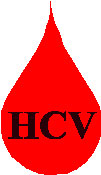This page is an archive. Its content may no longer be accurate and was last updated on the original publication date. It is intended for reference and as a historical record only. For hep C questions, call Help4Hep BC at 1-888-411-7578.
 |
| Hepatitis C Virus (HCV) is a Blood – Borne Disease. |
Hepatitis C…
- is a systemic disorder that primarily targets the liver, but can also trigger a host of autoimmune disorders and various other diseases, such as diabetes, non-Hodgkin’s lymphoma, retinal complications, kidney disease, chronic heart disease and thyroiditis.
- is caused by the hepatitis C virus (HCV). Hepatitis C was identified in 1989. Before 1989, this type of hepatitis was called non-A, non-B hepatitis, meaning that it was not caused by the viruses that produce hepatitis A or hepatitis B (two other viruses that can cause hepatitis).
- is often thought by the medical profession to be benign because the course of the disease is slow. However hepatitis C can kill by causing liver failure or liver cancer. For most people, the progression to morbidity and mortality is slow (20 to 40+ years); for others hepatitis C can cause cirrhosis and/or death more quickly.
- affects people differently. Some are not affected by the condition at all, or are affected very slowly, while others are affected very badly or very quickly.
- can have a great variety of symptoms, depending on what part of the body is affected by the virus.
It currently seems that if 100 people catch hepatitis C:
- 15-20 people will get rid of it within 2-6 months (much like we get rid of a flu virus)
- 60 people will have a long-term (chronic) infection that may cause no problems or may cause levels of liver damage ranging from mild to serious.
- 20-25 people will have a long-term infection that leads to serious liver damage after 20 years. Of these:
- 10-will remain stable, and
- the other 15 will progress to liver failure or liver cancer after another 5 years.
